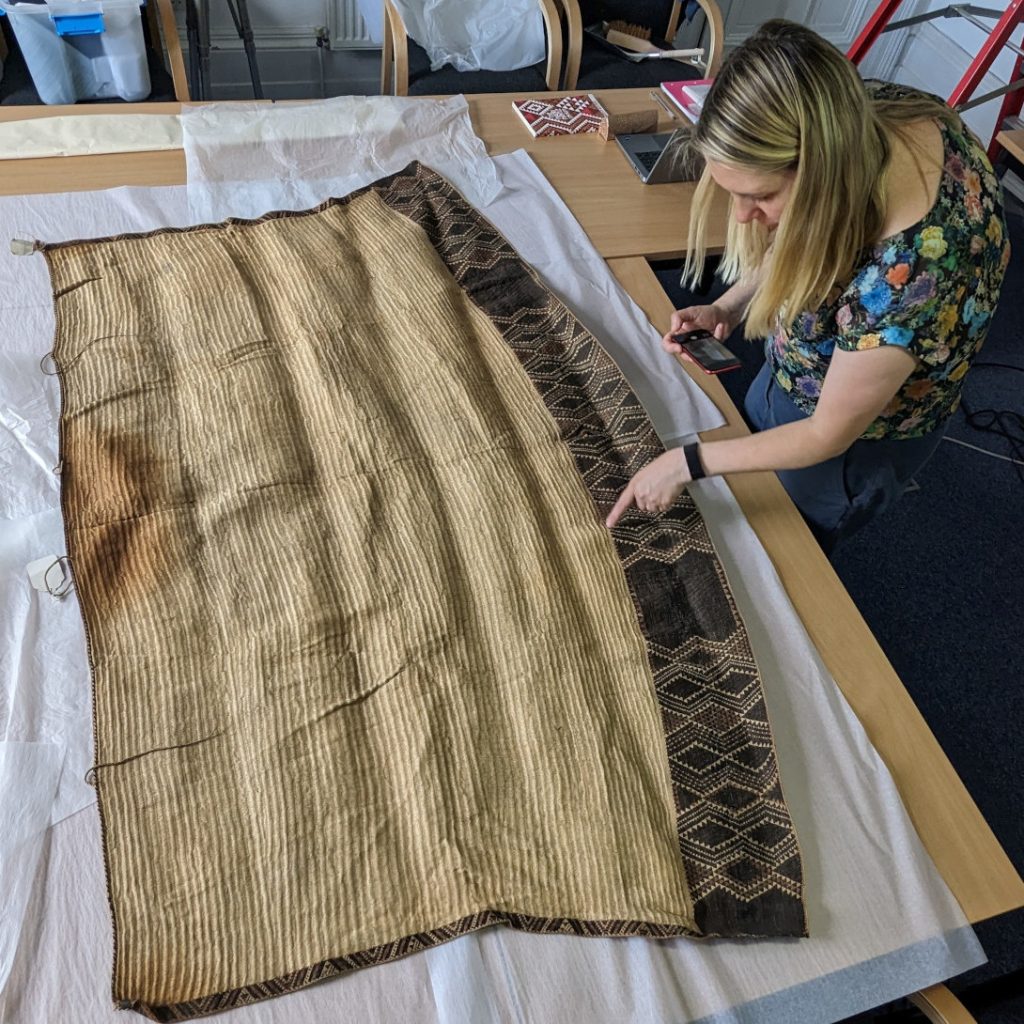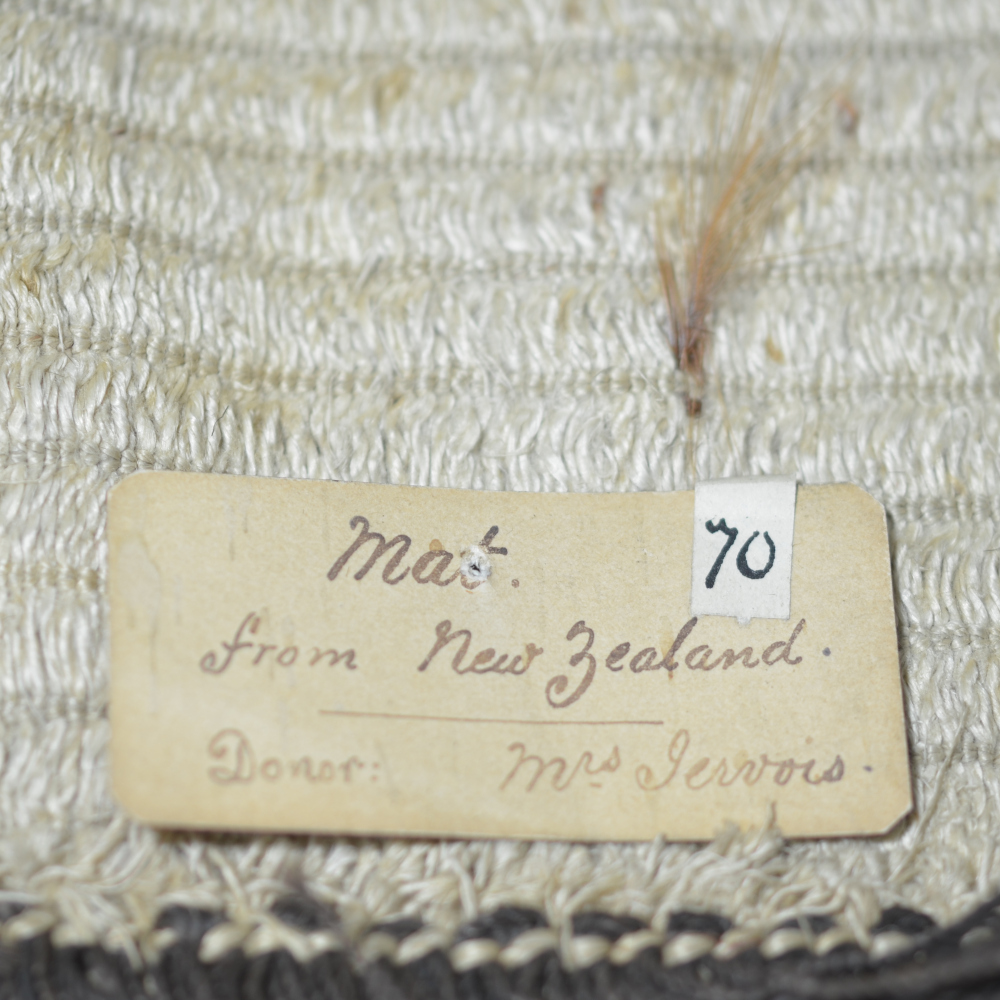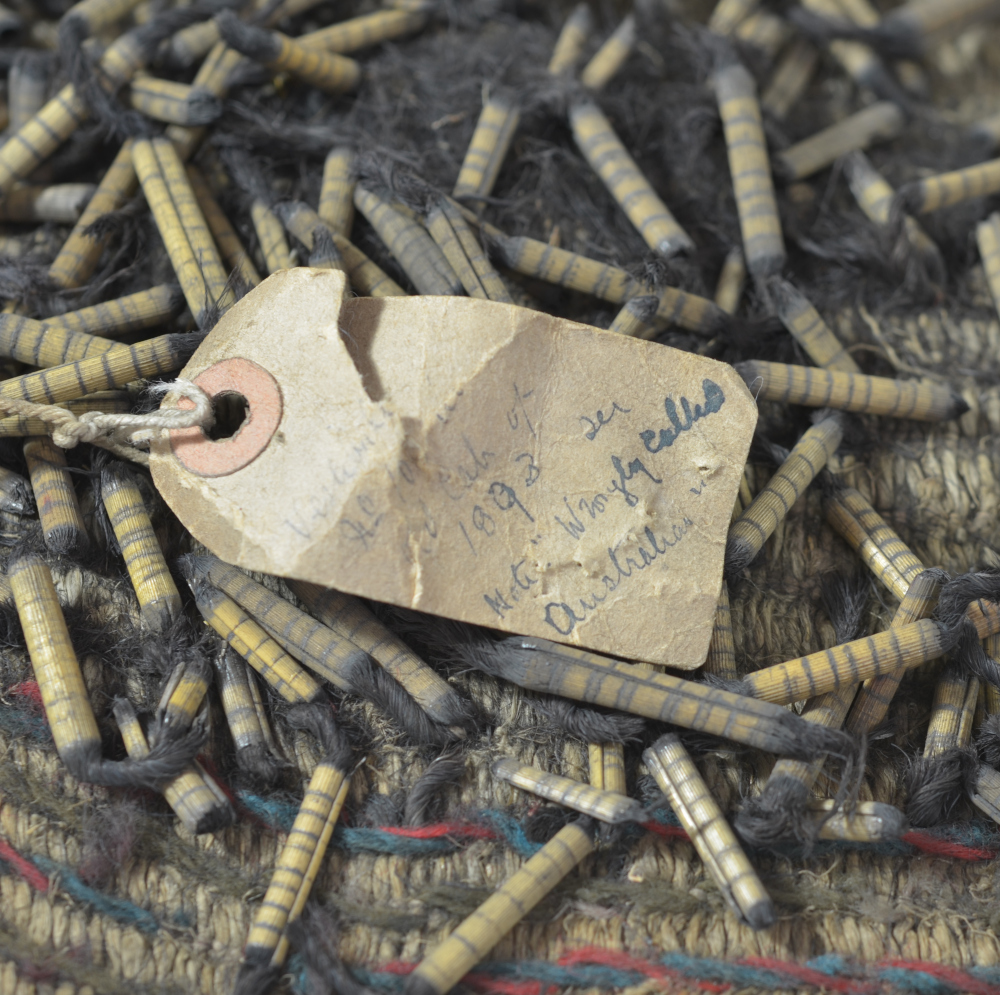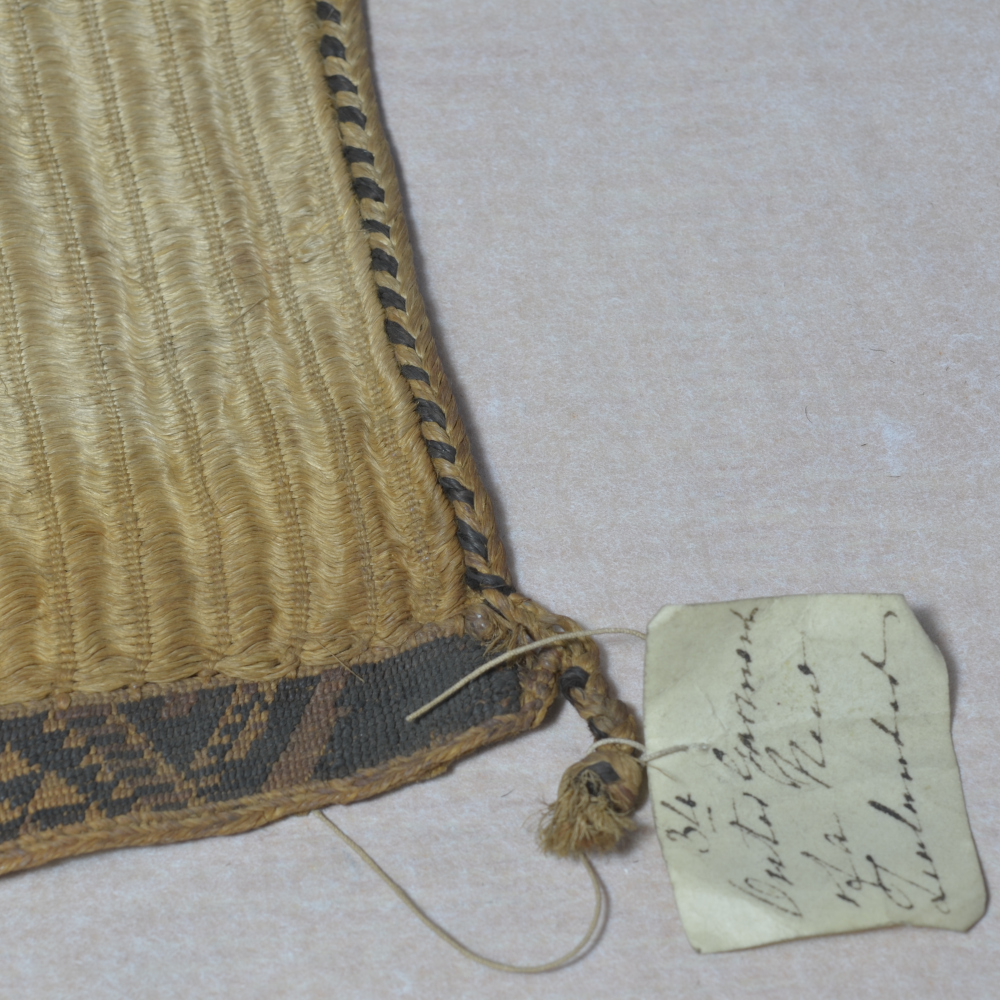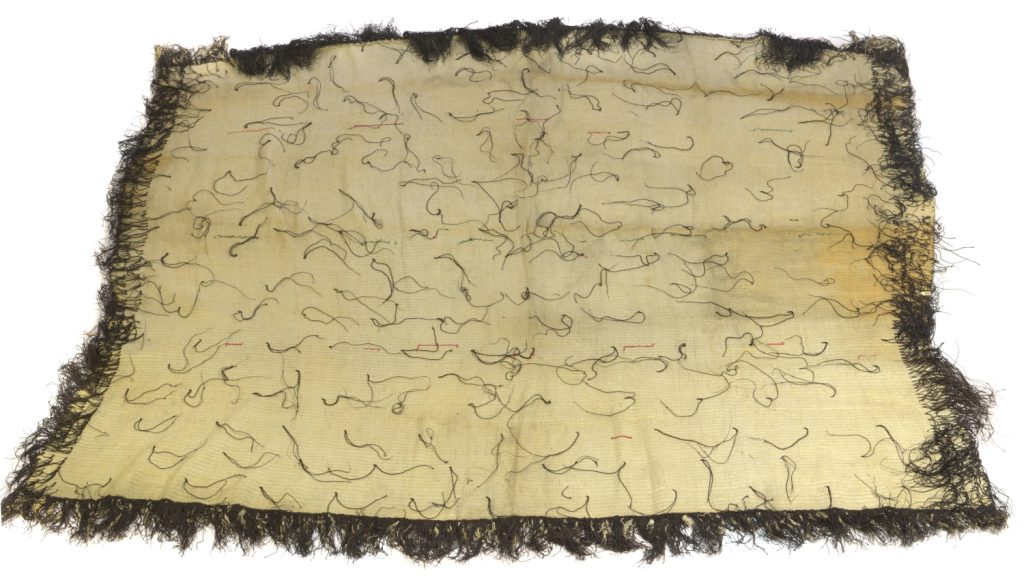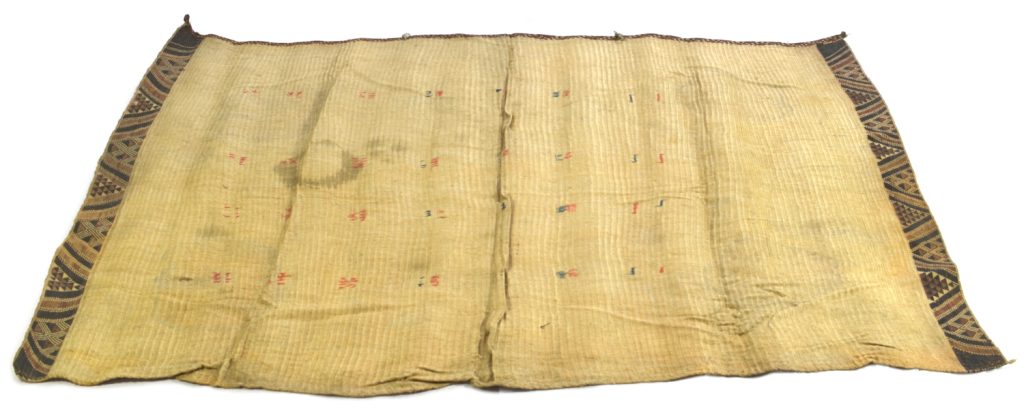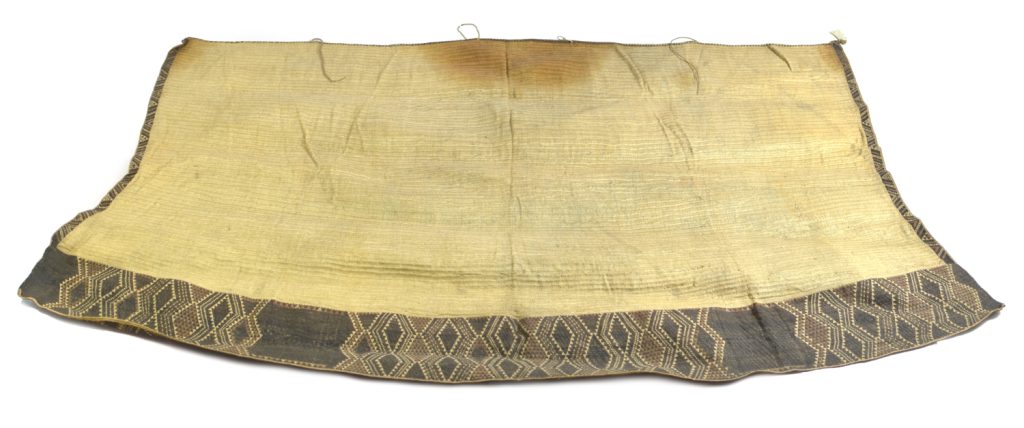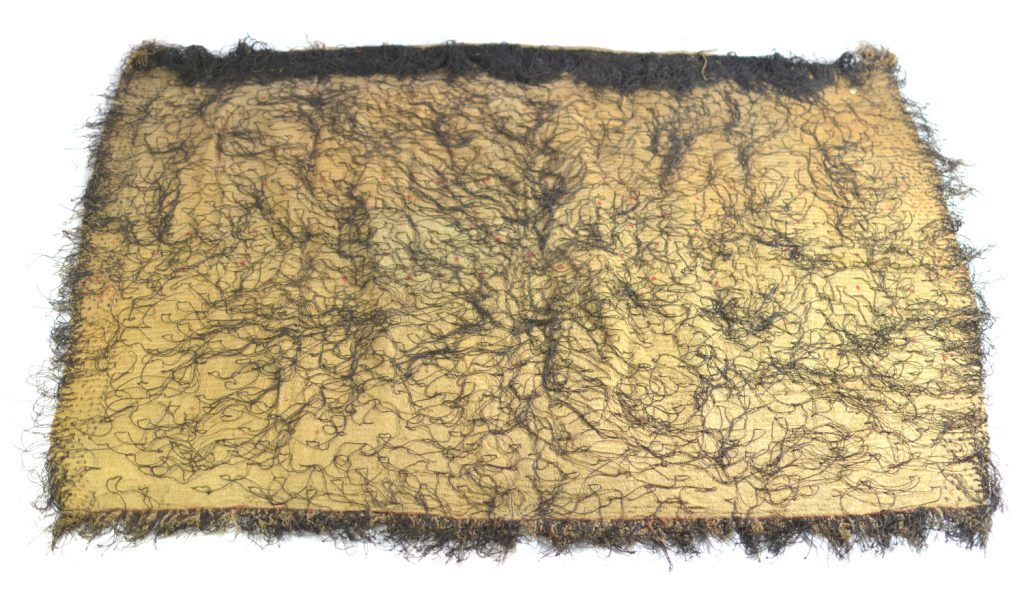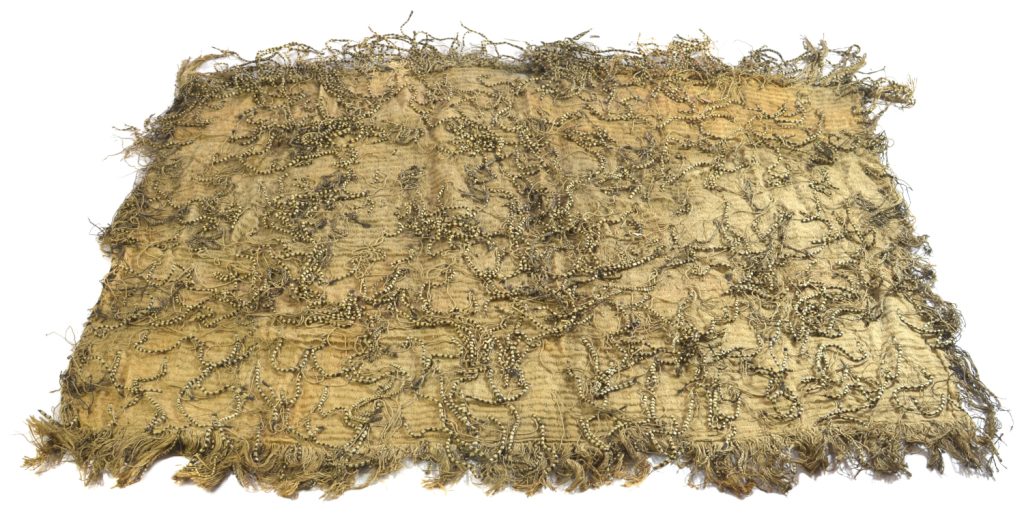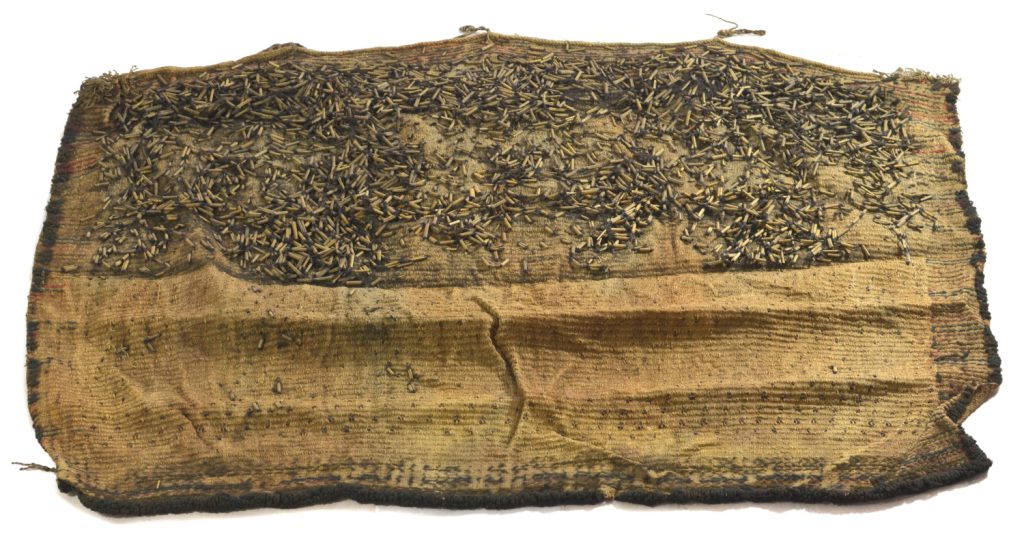Revealing Māori weaving in Bath: Six kākahu (cloaks) in the Bath Royal Literary and Scientific Institution
A guest post by Polly Bence (PhD researcher at the Universities of Bristol and Exeter) assisted by Matt Williams (BRLSI Collections Manager)
My name is Polly Bence and I am currently undertaking PhD research focusing on material culture collected from Australia and the Pacific Islands now housed in Bristol Museum and Art Gallery.
Bristol was a bustling port city, a blend of cultures and classes including merchants and the scholarly elite. By situating the collection within political, cultural and religious networks, I examine the collection’s development within a provincial city, once considered the birthplace of Anthropology.
Through an investigative survey, object identification and scrutiny of primary sources I am analysing the collection’s development. My overall aim to reveal female accounts and narratives of indigenous agency – both well-masked in a Museum constructed in the age of Empire. In order to discuss the Bristol Museum collection, it has been necessary for me to visit other Pacific collections in south west England – and this is where the Bath Royal Literary and Scientific Institution (BRLSI) comes in.
During the summer of 2022 I carried out a research trip to the Royal Cornwall Museum in Truro, The Box in Plymouth, Torquay Museum, the Royal Albert Memorial Museum in Exeter, and finally I spent the day in Bath with Collections Manager Matt Williams. I came away feeling energised and excited by what I had seen in the collection – noting several Māori cloaks from Aotearoa (New Zealand). We did not have the time to look at them during this visit, so we booked a research day to look at them in more detail.
Fast forward to July 2023 and we unrolled and photographed each cloak in turn. The six cloaks are in fantastic condition given their age, and yet they are unknown to weavers and researchers. The general term for cloak in the Māori language is kākahu and they were worn by eminent people as signifiers of social status, prestige and lineage. Each one took many months to make and were usually made using the leaves of the harakeke plant (New Zealand flax, or Phormium tenax) which when processed into silky fibre is called muka. Cloaks were made for a specific person, presented as gifts, passed down through generations and often given names. Different styles developed over time and types can be categorised by material, weave, decoration and adornments. Kaitaka are an early type of cloak, made in the eighteenth to mid-nineteenth century, with patterned borders. Feather cloaks (kahu huruhuru) became more regularly made from the mid-nineteenth century onwards, and korowai cloaks (with tassels) also became popular later. The collection in Bath is an unusual and varied, showcasing the incredible skill of Māori kairaranga (weavers). The six kākahu consist of two korowai cloaks, one kaitaka paepaeroa ngore, one kaitaka aronui/pātea, one korirangi cloak and one pihepihe. Generally speaking, kaitaka were made in the eighteenth to mid-nineteenth century and the korowai style from the mid to late-nineteenth century. These cloaks were collected by European visitors before being presented to the BRLSI in the mid to late-nineteenth century. In 2024, this important collection is now available online and Matt welcomes research enquiries. Many thanks to teacher, weaver and artist Dr Kahutoi Te Kanawa for her comments on this collection of kākahu, and to Matt Williams for his time on this project.
BRLSI.OC179, as with all of the kākahu in this collection, is made of harakeke (Phormium tenax or New Zealand flax) processed into muka (flax fibre) with decoration of black-dyed hukahuka (rolled threads) and wool yarn. Two kiwi(?) feathers (reddy brown) are sewn into the weaving at the top.
Width 206cm (top), Width 180cm (narrowest point), Length 181cm, with tassels 191cm.
Made in the mid to late-nineteenth century, this object was donated by Mrs Jervois in 1869. From the Institution’s annual report: In 1869 Mrs. Capt. Jervois donated ‘sundry articles of dress and various implements from New Zealand and Otaheite [Tahiti]’.
Information from Dr Kahutoi Te Kanawa: The hukahuka [tassels] are quite tight and thin, which is indicative of these Korowai tags.
BRLSI.OC192 is a kaitaka paepaeroa, which is the name for a cloak with aho (weft threads – lines of descent and/or connection) rows are worn vertically. Ngore is the name for a cloak decorated with wool tufts, which are incorporated into the weave.
This cloak has a deep tāniko border on either side and a narrow decoration at bottom. Blue, and red wool tufts on front at intervals. Length 116.5cm, Width 144cm (bottom weave), Width 155cm (top)
Made in the eighteenth to mid-nineteenth century. Donor unknown.
Information from Dr Kahutoi Te Kanawa: The worn woolen ngore are quite spread apart from other ngore cloaks/kaitaka I have viewed. The Tāniko is exquisite and the black dye is in very good condition. This is the aramoana pattern. The thin edge is woven in. Raranga Takitahi and takirua weave as opposed to whatu tāniko.
BRLSI.OC194 is made of a triangular shaped, horizontal weave, with a deep tāniko border of brown and black on the bottom, and narrow bands on the sides.
Width 188cm, Length 105.5cm (middle).
Made in the eighteenth to mid-nineteenth century. Donor unknown.
Information from Dr Kahutoi Te Kanawa: This features the poka (shaping) hence the tapering of the Kaitaka.
BRLSI.OC194 has horizontal threads with black hukahuka cords and both black and natural, undied hukahuka cords on front. It has red or brown wool edging at sides, and green, blue, orange, yellow and red tags.
Length 155cm (with tassels), Width 142.5cm (bottom) Width 171.5cm (middle).
Made mid to late-nineteenth century. Donor unknown.
Information from Dr Kahutoi Te Kanawa: The woolen tags have frayed over time. The natural dyes of the hukahuka and pōkinikini that appears on some of the edges are a culmination of natural mud dyes and tree bark tannins worthiness of holding its colour.
BRLSI.OC199 is a form of pihepihe with black and yellow pōkinikini tags (cylindrical, dried harakeke strands with regular intervals of black-dyed muka) and a horizontal weave.
Width 122cm, Length 114cm with (tassels).
Made in the mid to late-nineteenth century. Donor: Mrs Kilvert, 1879. The collector was perhaps her husband Rev Robert Francis Kilvert who died in 1879. From the annual report: Mrs. Robert Kilvert donated two items which were described as ‘Native Dress and Tippet [cape] from New Zealand’.
Information from Dr Kahutoi Te Kanawa: This is a very interesting korirangi cloak. It is so distinct in its own right, and in very good condition.
BRLSI.OC200 has a horizontal weave, entirely decorated with pōkinikini tags, and each edge was once decorated with red, brown and blue wool chevrons, with a black wool border at bottom edge.
Width 142cm (top), Length 105cm.
Made in the mid to late-nineteenth century. Donated by: Mrs Kilvert, 1879. The collector was perhaps her husband Rev Robert Francis Kilvert who died in 1879. From the annual report: Mrs. Robert Kilvert donated two items which were described as ‘Native Dress and Tippet [cape] from New Zealand’.
Information from Dr Kahutoi Te Kanawa: In need of conservation and the pōkinikini are very fragile.
The following information relating to Māori cloaks was found in the Institution’s Annual Reports:
- In 1835 ‘A Lady’ donated ‘New Zealander’s dress – Chief’s grass cloak, bound with twine, from New Zealand’
- In 1857 Mr J. E. Tylee presented the town council with a ‘Cloak worn by a New Zealand chief’ which was then deposited by William Bush
- In 1874 ‘The late Miss E. A. Lockey, of Swainswick [Emma]’ donated a ‘New Zealand cloak and sundry Australian weapons’
- In 1869 Mrs. Capt. Jervois donated ‘sundry articles of dress and various implements from New Zealand and Otaheite [Tahiti]’
- In 1879 Mrs. Robert Kilvert donated two items which were described as ‘Native Dress and Tippet [cape] from New Zealand’
- In 1894 Dymond created a catalogue which attributed ‘2 specimens of the New Zealanders’ Dress’ to Mr. J.P. Tylee (erroneous reattribution)
References
Tamarapa, A. (ed.) (2011) Whatu Kākahu, Māori cloaks. Wellington, New Zealand: Te Papa Press.

